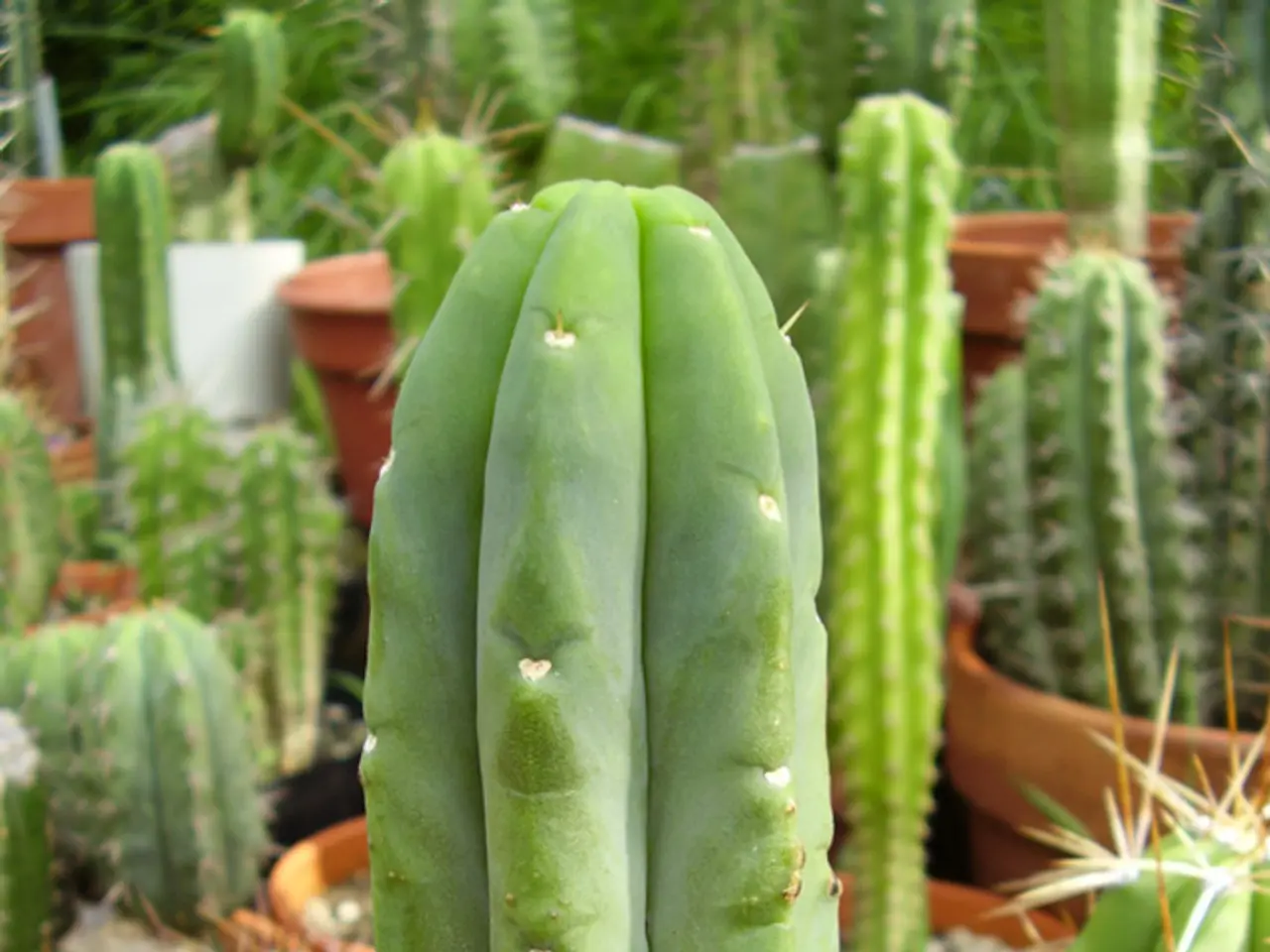Plants Rising up in Defense!
In the ongoing evolutionary arms race between plants and their predators, plants have developed a variety of physical defenses to deter herbivores. This battle, reminiscent of the Red Queen hypothesis from Lewis Carroll's 1871 novel Through the Looking-Glass, suggests that species must adapt and evolve just to live and reproduce.
One such defense mechanism is the use of trichomes, tiny hairs on plant surfaces. Nonglandular trichomes mainly prevent insect attachment by making it physically difficult for them to maintain a grip, while glandular trichomes secrete toxic or deterrent metabolites such as terpenoids and alkaloids that discourage feeding. The woolly plantain in Nunn, Colorado, employs dense trichomes to keep insects off its leaf surfaces.
Plants also rely on cuticle layers and waxes to form a thick, often slippery or tough outer barrier that impedes herbivore access and feeding. Other structural modifications, such as thorns, spines, toughened leaves, and hardened tissues, physically reduce herbivore damage.
Spotted spurge, for instance, camouflages among a gravel pathway, while spines on cacti, holly, and Oregon grape serve as formidable barriers. Some New World cacti have developed glochids, hooked spines that dig into the skin to cause even greater irritation. Many grass species also have seeds equipped with sharp, bristly awns that can become painfully embedded in herbivores, discouraging them from consumption.
Plants endemic to coasts and dunes may exude sticky glandular secretions to blend into the scenery or dissuade herbivores with a mouthful of grit. Some plants, like sensitive plants (genus Mimosa), will curl up their leaves when touched or vibrated as a defense mechanism called thigmonasty. This lessens the surface area of leaves and lowers the chance of herbivory by larger animals or can be swift enough to fling off tiny insects.
These physical defenses are part of a complex evolutionary arms race where plants evolve these protective features to reduce herbivory, and herbivores counteradapt strategies to overcome these barriers. This dynamic drives continuous adaptation on both sides.
The interplay of physical and chemical defenses reflects the integrated nature of plant defensive strategies. While this article has focused on physical defenses, it's essential to remember that plants also employ chemical defenses and sophisticated signaling pathways to coordinate further biochemical responses to herbivore attack.
In conclusion, plants deter herbivores physically by evolving surface structures that directly hinder feeding or act as toxic traps, representing a key component of their evolutionary defense arsenal against herbivory. This ongoing battle between plants and herbivores continues to shape the diversity of life on Earth.
[1] Cornelissen, J. H. C., & Agrawal, A. A. (2006). Physical defences in plants: a review. Journal of Ecology, 94(6), 1069-1081. [2] Dudley, R., & Moles, A. T. (2008). The evolution of plant defenses: trade-offs, coevolution, and ecological and evolutionary consequences. Annual Review of Ecology, Evolution, and Systematics, 39, 361-382. [3] Howe, P. R., & Jander, G. (1996). Signaling in plants: jasmonic acid and systemic acquired resistance. Trends in Plant Science, 1, 252-256.
- Besides physical defenses, plants employ chemical defenses and sophisticated signaling pathways as part of their integrated defensive strategies, serving to further deter potential herbivores.
- In the home-and-garden domain, gardeners can implement these environmental strategies by selecting plants with strong defense mechanisms, such as woolly plantain with its dense trichomes, to discourage pests and herbivores in their gardens.
- The study and understanding of these plant defenses can provide valuable insights into the lifestyle and adaptations of various species in different environments, enhancing our appreciation for the natural world and its diverse plant life.




